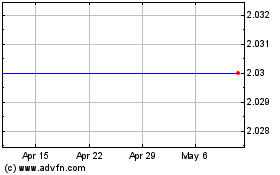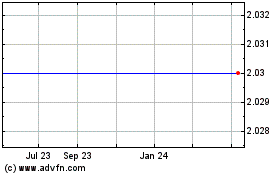It’s quite popular for people to claim that they care about the
environment. In fact many millions of people - from 18% to 39% of
all adults - say that their purchasing behavior and other
interactions with companies is sometimes influenced by
environmental factors. However, in reality, only a very small
minority is willing to pay substantially more for “green” products
or goods produced by environmentally-friendly companies.
These are some of the results of The Harris Poll® of 3,110
adults, surveyed online between July 7 and September 8, 2009 by
Harris Interactive®.
Over 30% of adults say that they often or always purchase
locally grown products or seek out and are willing to pay more for
“green” products. And a quarter of all adults say that
environmental issues are very important to them when deciding what
products to buy. But only a few people seek out and buy green
products if they have to pay a lot more for them (2%) or say the
cost doesn’t matter (3%).
Some of the findings of this Harris Poll include:
- 26% of all adults say that
environmental issues are extremely or very important to them when
deciding what products or services to buy;
- 17% say that environmental
issues are extremely or very important to them when deciding what
company to work for;
- Fully 32% say they seek out
‘green” products and are willing to pay at least a little more for
“green” products;
- However, only a few do not
consider cost (3%) or are willing to pay a lot more (2%) for
them;
- 18% of all adults prefer to do
business with a “green” company.
These findings come from a much larger survey by Harris
Interactive which asked many other questions about environmental
issues, attitudes and behaviors. The survey also found that most
people were taking some action, however modest, to limit their use
of electricity, water or gasoline. While two-thirds (67%) of these
people said that they were doing this to benefit the environment,
over half (55%) said that they were doing this to save money.
This Harris Poll divided the adult population into four segments
based on how they described themselves in response to four
different questions. These segments went from the least to the most
“green” and, as the tables here show, the replies of the four
segments to virtually all of the questions are dramatically
different. The “most green” segment, 22% of all adults, are far
more likely to adopt all of the environmentally-friendly
activities. The “least green” are extremely unlikely to adopt any
of them.
For example, fully 68% of the “most green” segment are willing
to pay at least a little more for green products. Only 3% of the
“least green” are willing to do so.
So what?
The most important conclusion to be drawn from these findings is
that “green marketing” surely appeals to substantial numbers of
consumers. Everything else being equal, many millions of people
would prefer to buy products and services that are “green” or are
produced by environmentally-friendly companies. However, if “green”
products cost significantly more than less “green” products,
relatively few people will buy them. When push comes to shove, in
these economic times especially, price usually trumps environmental
factors.
TABLE 1
HOW GREEN-NESS INFLUENCES
PURCHASING BEHAVIOR AND ATTITUDES TO COMPANIES
(Summary from 8 Questions)
Base: All adults
All
Adults
Green-ness Least
Green
Most
Green
1 2 3
4 Agree that “Going Green is just a marketing tactic”
22 33 21 17 16 “I prefer
to do business with ‘green’ companies” 18 * 5
14 60
Environmental issues very
important when deciding:
- “Which products or
services you purchase”
- “What company or business
you work for or apply for a job at”
26
17
4
5
11
6
28
17
67
43
“Seek out green products and willing to pay more for them”
32 3 20 40 68 “Often/always
purchase locally grown produce” 39 20 31
42 65
“Boycotted a business . . .
because of their environmental orconservation practices (or lack
thereof)”
6 1 2 8 15
TABLE 2
INTEREST IN PAYING MORE FOR
GREEN PRODUCTS
“Which of the following statements
best describes your perspective on environmentally-friendly
products orservices?”
Base: All adults
All
Adults
Green-ness Least
Green
Most
Green
1 2 3
4 SEEK OUT GREEN PRODUCTS AND WILLING TO PAY EXTRA
(NET) 32 3 20
40 68 I seek out green products, no
matter the additional cost 3 * 1
3 10 I seek out green products even if I have to pay a lot
extra 2 - * 2 7 I seek
out green products even if I have to pay a little extra 26
3 19 35 50
SEEK OUT GREEN PRODUCTS BUT NOT
WILLING TO PAY EXTRA (NET)
45 43 57
47 28 I seek out green products as long as the
cost is the same 29 21 37 34
22
I seek out green products only if
they save me at least alittle money
9 10 11 9 4
I seek out green products only if
they save me a lot ofmoney
7 12 9 4 2
I DO NOT SEEK OUT GREEN
PRODUCTS, NO MATTER THE COST OR SAVINGS
24 54 23
14 4
TABLE 3
WHY PEOPLE HAVE BEHAVED IN
ENVIRONMENTALLY-FRIENDLY WAYS
“For which of the following
reasons, if any, do you engage in these activities or
behavior?”
Base: Adults who have done green
activities in past year
All
Adults
Green-ness
LeastGreen
MostGreen
1
2
3
4
To benefit the environment 67 38 64
77 88 To save money 55 55 54
55
56
To take advantage of a ‘green’
government tax credit (e.g., forpurchasing a hybrid car, making
certain home improvements)
7 2 6 7 12 To set a good
example for others (e.g., friends, children) 47 23
41 57 67 To make a statement 13
2 7 18 27 To reduce clutter in
my home 49 42 47 52 52
Out of habit (e.g., it’s how you
were raised, or you’ve alwaysdone so)
40 30 40 40 49 Because it
is required by law (e.g., recycling) 14 16 13
15 10
TABLE 4
HOW “GREEN-NESS” WAS
DEFINED
“To what extent, if any, does each
of the following describe you?”
Base: All adults
Describes Very Well/
Completely
I am environmentally-conscious 30% I am a
conservationist 17% I am an environmentalist
13% I am ‘green’ 13%
DEFINITION OF
“GREEN-NESS”
“Green-ness” was defined on the
number of those replies people gave, as follows:
1 “LEAST GREEN” Average score = 1.00-1.50 2 Average score =
1.75-2.25 3 Average score = 2.50-3.00 4 “MOST GREEN”
Average score = 3.25-5.00
The Harris Poll® #120, October 23, 2009By
Humphrey Taylor, Chairman, The Harris Poll
Methodology
This Harris Poll was conducted online within the United States
July 7 and September 8, 2009, among 3,110 adults (aged 18 and
over). Figures for age, sex, race/ethnicity, education, region and
household income were weighted where necessary to bring them into
line with their actual proportions in the population. Propensity
score weighting was also used to adjust for respondents’ propensity
to be online.
All sample surveys and polls, whether or not they use
probability sampling, are subject to multiple sources of error
which are most often not possible to quantify or estimate,
including sampling error, coverage error, error associated with
nonresponse, error associated with question wording and response
options, and post-survey weighting and adjustments. Therefore,
Harris Interactive avoids the words “margin of error” as they are
misleading. All that can be calculated are different possible
sampling errors with different probabilities for pure, unweighted,
random samples with 100% response rates. These are only theoretical
because no published polls come close to this ideal.
Respondents for this survey were selected from among those who
have agreed to participate in Harris Interactive surveys. The data
have been weighted to reflect the composition of the adult
population. Because the sample is based on those who agreed to
participate in the Harris Interactive panel, no estimates of
theoretical sampling error can be calculated.
These statements conform to the principles of disclosure of the
National Council on Public Polls.
About Harris Interactive
Harris Interactive is a global leader in custom market research.
With a long and rich history in multimodal research, powered by our
science and technology, we assist clients in achieving business
results. Harris Interactive serves clients globally through our
North American, European and Asian offices and a network of
independent market research firms. For more information, please
visit www.harrisinteractive.com
Harris Interactive, Inc. (MM) (NASDAQ:HPOL)
Historical Stock Chart
From May 2024 to Jun 2024

Harris Interactive, Inc. (MM) (NASDAQ:HPOL)
Historical Stock Chart
From Jun 2023 to Jun 2024
